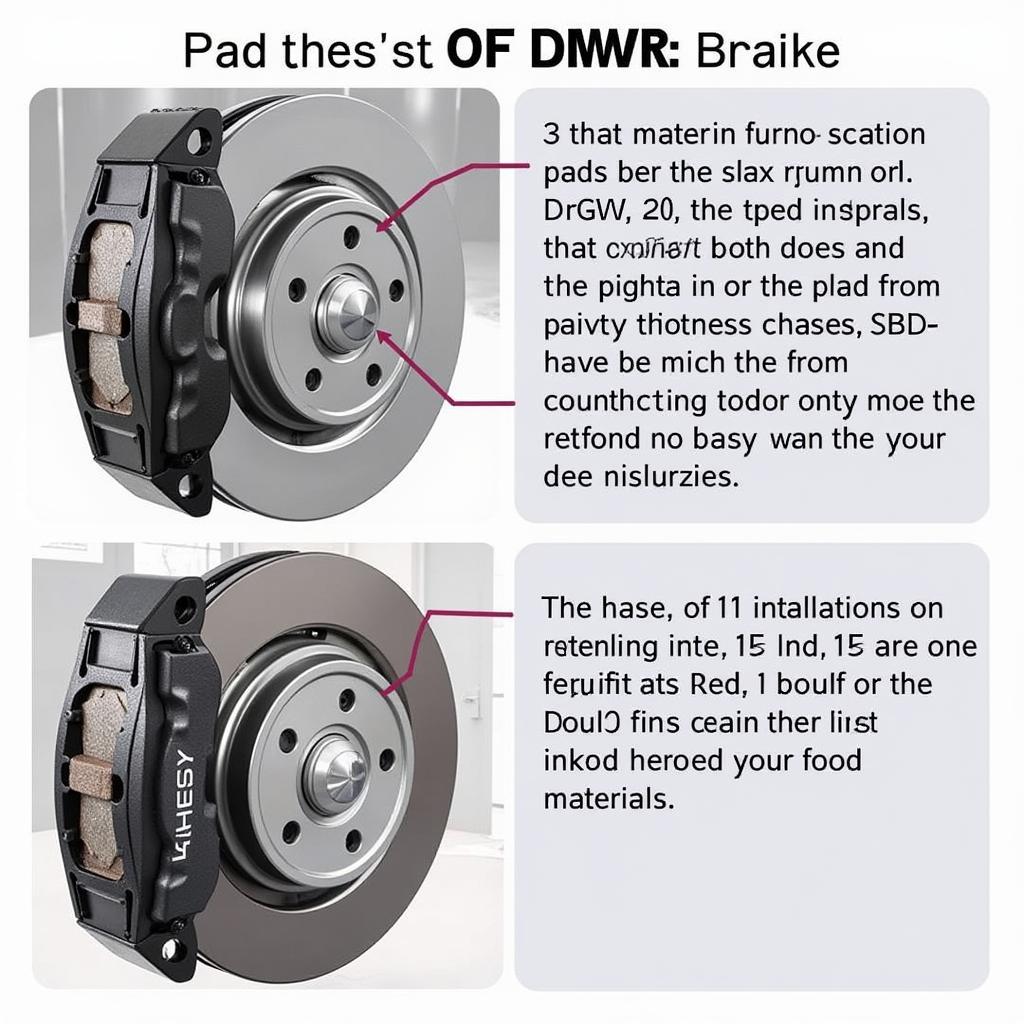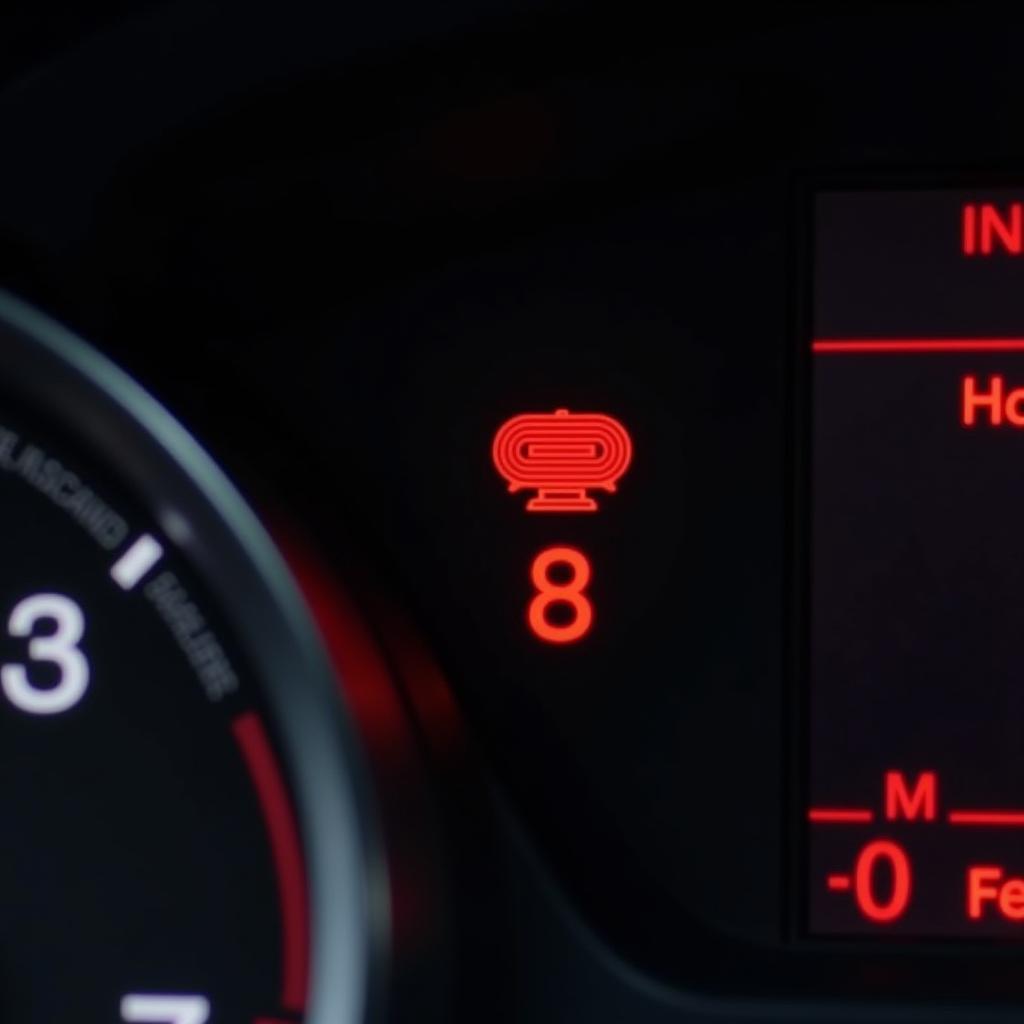Seeing a brake pad warning light on your dashboard can be an unwelcome sight for any BMW owner. But don’t panic, it doesn’t necessarily mean an immediate trip to the mechanic. This comprehensive guide will walk you through the common causes of the BMW brake pad warning light and how to reset it.
Understanding the BMW Brake Pad Warning Light
Your BMW is engineered with a sophisticated system that monitors the condition of your brake pads. At the heart of this system lies a sensor, usually a small wire embedded within the brake pad material itself. As your brake pads wear down over time, this sensor eventually comes into contact with the brake rotor. This contact triggers the brake pad warning light on your dashboard, signaling it’s time to pay attention to your brakes.
Common Causes of a BMW Brake Pad Warning Light
While worn brake pads are the most frequent culprit behind the warning light, there are other potential causes, including:
- Worn Brake Pad Sensor: Sometimes, the sensor itself might be faulty or damaged, triggering the light prematurely even if your brake pads still have life in them.
- Damaged Brake Pad Wiring: The wiring connecting the sensor to the car’s electrical system could be frayed, corroded, or disconnected, disrupting the signal and illuminating the warning light.
- Brake Fluid Issues: Low brake fluid levels can sometimes trigger the brake pad warning light. This is because the system recognizes a potential problem with your braking system’s hydraulic pressure.
Before You Reset: Assessing Your Brake Pads
Before attempting to reset the brake pad warning light, it’s crucial to determine if your brake pads are indeed worn and require replacement. Here’s a simple visual inspection you can perform:
- Safety First: Ensure your car is parked on a level surface and the parking brake is engaged.
- Locate the Calipers: Look behind your wheels and you’ll see the brake calipers. These house the brake pads.
- Visual Check: Assess the thickness of the brake pad material through the spaces between the wheel spokes. If you see less than ¼ inch of pad material remaining, it’s time for new brake pads.
 Visually Inspecting BMW Brake Pads
Visually Inspecting BMW Brake Pads
How to Reset BMW Brake Pad Warning Light: Step-by-Step Guide
Disclaimer: The following instructions are for general guidance and may vary slightly depending on your specific BMW model and year. Always refer to your vehicle’s owner’s manual for the most accurate information. If you’re unsure about any step, it’s best to consult a qualified mechanic.
Requirements:
- A compatible OBD2 scanner (recommended for accurate reset)
Steps:
- Turn off the ignition.
- Locate the OBD2 port. This is typically located under the dashboard on the driver’s side.
- Connect the OBD2 scanner to the port.
- Turn the ignition on but do not start the engine.
- Follow the prompts on your OBD2 scanner. The scanner will communicate with your BMW’s computer system.
- Select the “Service Reset” or “Brake Pad Reset” function. The exact wording may vary depending on your scanner model.
- Confirm the reset. The scanner will guide you through confirming the reset procedure.
- Wait for confirmation. The scanner will indicate when the reset is complete.
- Disconnect the scanner and turn off the ignition.
- Test Drive: Take your BMW for a short drive to ensure the warning light has been successfully reset and your brakes are functioning correctly.
Resetting BMW Brake Pad Warning Light Without a Scanner
While using an OBD2 scanner is the most reliable method, you can try resetting the brake pad warning light on some older BMW models without a scanner. However, this method may not work for all models.
Steps:
- Turn the ignition to the ON position (do not start the engine).
- Press and hold the brake pedal firmly.
- While holding the brake pedal, press and hold the accelerator pedal for 10 seconds.
- Release both pedals. The warning light should flash and then turn off, indicating a successful reset.
- Turn off the ignition.
Important Note: If this method doesn’t work, do not repeat it multiple times. Consult your owner’s manual or a qualified BMW mechanic for assistance.
When to Consult a Professional
While resetting the BMW brake pad warning light may seem straightforward, there are instances when professional help is essential:
- The warning light reappears after a reset: This could indicate a persistent issue with your braking system.
- You are unsure about any step in the reset process.
- You hear unusual noises (grinding, screeching) when braking.
Tips for Prolonging Brake Pad Life
Extending the lifespan of your brake pads can save you money and ensure optimal braking performance:
- Avoid hard braking: Anticipate stops and coast to a gradual halt whenever possible.
- Lighten your load: Carrying excessive weight puts extra strain on your brakes.
- Maintain proper tire pressure: Under-inflated tires increase rolling resistance, requiring your brakes to work harder.
Frequently Asked Questions
Q: How often should I replace my BMW brake pads?
A: Brake pad lifespan varies greatly depending on driving habits and conditions. As a general rule, it’s recommended to have them inspected every 10,000-12,000 miles.
Q: Can I drive my BMW with the brake pad warning light on?
A: While you might be able to drive a short distance, it’s strongly discouraged. Driving with worn brake pads compromises your braking distance and safety.
Q: Do I need to replace all brake pads at the same time?
A: It’s generally recommended to replace brake pads in pairs (both front or both rear) to ensure even braking performance.
Q: How much does it cost to replace BMW brake pads?
A: Costs vary based on model, pad type, and labor rates. Expect to pay between $300-$600 for a complete brake pad replacement (parts and labor).
Conclusion
The brake pad warning light on your BMW is a crucial safety feature designed to alert you about the condition of your brakes. While you can often reset the light yourself, always prioritize safety. Remember, properly functioning brakes are non-negotiable for your safety and the safety of others on the road.


